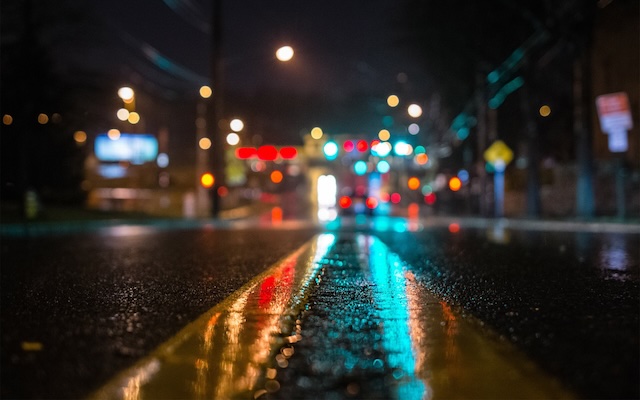Just a few days after the excellent New York Times article about the Bogotá rapid buses, the Times published a data-heavy article about increasing pedestrian fatalities and that fact that most of them take place at night. While the article makes several important points, it also misses two key points that leads it to make some wrong conclusions.
Seeing through the data. Photo by emre0614.
A 2019 Antiplanner policy brief made many of the points found in the Times article: Pedestrian fatalities are up, most of the increase is at night and has taken place on arterial streets, and distractions from cell phone usage may be a part of the problem. All of this information can be dredged out of federal accident databases. Almost two years ago, I noted that Portland and San Jose had released data indicating that a high percentage of fatalities were homeless, which was also mentioned by the Times.
The Times even points out that animosity towards larger vehicles such as SUVs is misplaced because they represent only a small share of the increase in fatalities. However, the Times also claimed that many of the fatalities are in low-income neighborhoods. While possible, the data behind this is even weaker than the data suggesting that homeless people are suffering a large share of the fatalities. Based on this, however, the Times seems to conclude that the solution is more sidewalks, better-lit crosswalks, and slower speeds — much like Vision Zero.
While I’m impressed that the Times took such a close look at the numbers, the writers missed two important facts made plain by the federal data that should change the conclusions. First, most of the nighttime pedestrian fatalities take place away from crosswalks. Second, a large share of the pedestrians killed are under the influence of alcohol or drugs. New sidewalks, redesigned crosswalks, and reduced speed limits don’t necessarily address these issues.
Earlier this year, my review of Denver’s Vision Zero plan concluded that much of Vision Zero’s ideas are misplaced because they don’t address the real problems. In Colorado, far more lives could be saved by requiring motorcyclists to wear helmets than by slowing down auto traffic. Discouraging pedestrians from crossing streets away from crosswalks and finding places for the homeless away from busy streets would also do more than fixing crosswalks. If the Times had looked even closer at the data, the writers might have come out with completely different recommendations.









Maybe wearing all black, jaywalking and having ear buds in your ears is not wisest course of action.
Most US pedestrian deaths are urban. In name of so called racial equity, Law enforcement have been effectively neutered; that includes from enforcing Jaywalking measures. Combined rise wireless earbuds people cross non-intersections related streets and roads without paying attention.
– Cross at intersection
– Stop dressing like a burglar
– put the phone down
– Take the buds out and listen to your surroundings
Pedestrian fatalities in Europe rose too but are Lower than the US. But statistics are bucked. Europe has twice US population. Where as Americans drive 5 Trillion miles, EU27, drives little over half that much……
If we measure pedestrian fatalities with respect to Per Billion passenger miles USA and EU are similar.
As for Drugs? That’s a whole different circumstance, Let Darwinism get that out.
I was run over by an automobile — in a well-marked cross walk, intersection of two well-lit single-lane suburban streets, walk/don’t walk signal, light traffic, after dark.
The car was turning left from the left-turn lane and turned into the cross walk where I was … walking … with the blessing of the walk/don’t walk light.
Driver’s fault completely but … I now wear a light at night because I now understand that drivers aren’t looking for pedestrians, especially after dark. It’s harder to see what you aren’t looking for.
Walk at night? Get a light. Same for bike at night. And maybe one for your dog.
Coda: Our little suburb just installed middle-of-block crosswalks in a few places where people are likely to cross. Curb cuts, painted cross walk, pedestrian-activated flashing lights.
Part of the problem is likely fentanyl. Arbitrary drugs could case poor driving any time of day but driving badly at sundown or shortly after suggests opiate intoxication.
Suppliers are adding fentanyl to many other drugs, so users are taking in a lot of opiates, often when they haven’t really planned to do so.
Fentanyl (like other opiates) narrows your pupils making it harder to see as the light fades, and slows down your pupil’s adjusting, and these effects pass off slowly.
At this link, look at the column for “Narcotic Analgesics” (meaning “opiates”): Table II: Summary of effects of abusive drugs on ocular motility and pupil. Note that other drugs don’t have the critical effects.
That table comes from https://www.ncbi.nlm.nih.gov/pmc/articles/PMC6886135/
Now it makes sense that there’s more pedestrian deaths in the US compared to Europe – in Europe they don’t have cell phones, dark nights, black clothing, alcohol, or drugs.
janehavisham, thank you for sharing that teenage twaddle. You did a wonderful job of doing absolutely nothing to make the world a better place. Gold star.
@The Antiplanner, are you sure the increased pedestrian accidents are not simply due to changing US demographic? Many things could be easily explained by changing demographics, like ski resort yearly visitors, and boy do those two graphs line up perfectly.
@Wordpress_anonymous, again that makes sense since they don’t have ski resorts in Europe.